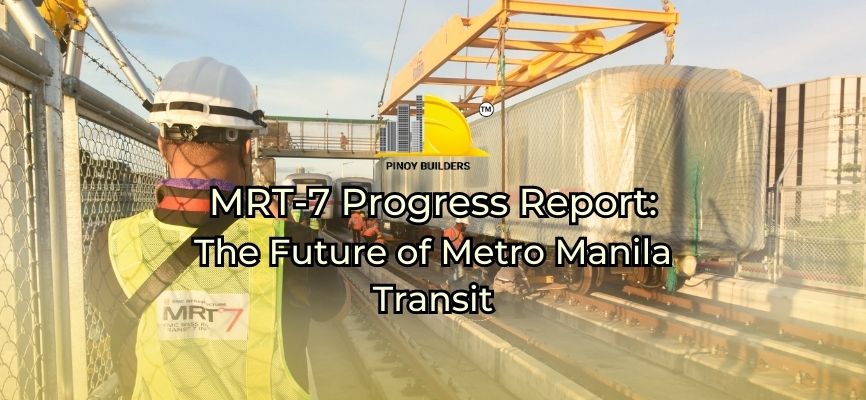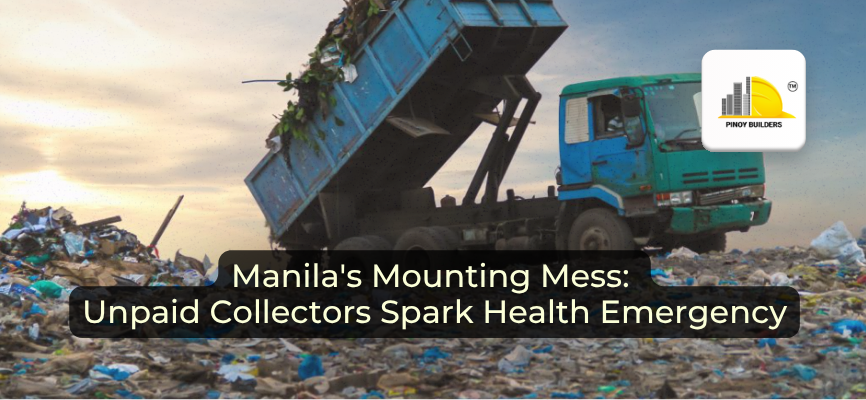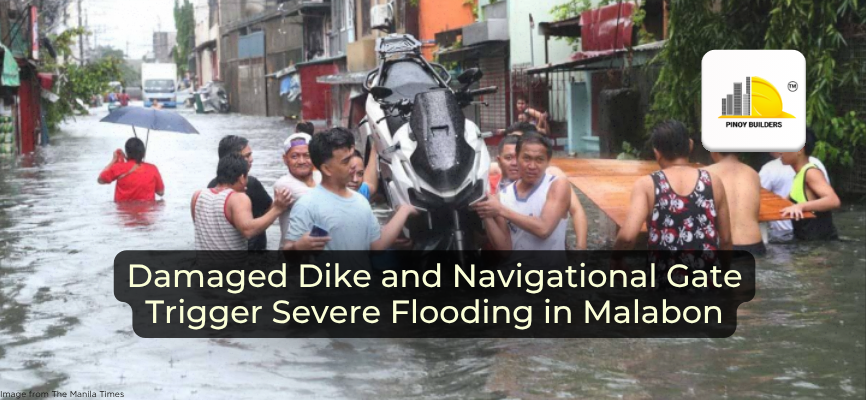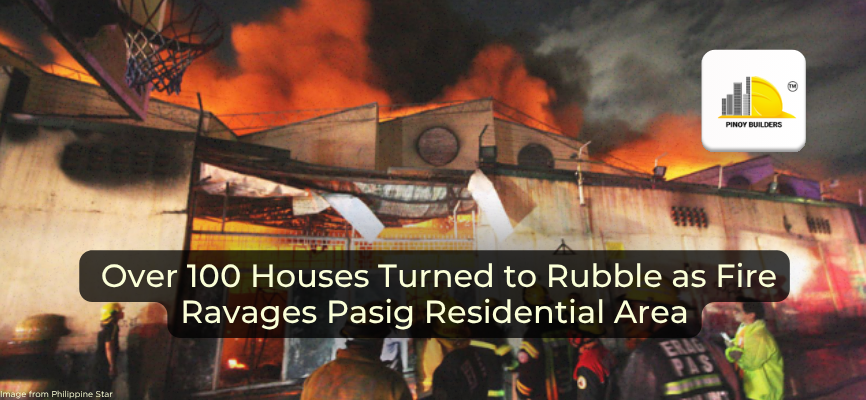San Miguel Corp. (SMC), a diversified conglomerate, has made significant progress in the construction of the Metro Rail Transit Line 7 (MRT-7) as it begins pre-construction works for the turnback guideway of the railway. SMC, along with the Department of Transportation (DOTr) and the Quezon City government, held a groundbreaking ceremony for the pre-construction phase of the turnback guideway, bringing the rail project closer to completion.
Here’s a brief look at the progress of the MRT-7 so far and what the future holds for transit in the Philippines.
MRT-7: Progress So Far
The rail’s turnback guideway, located along West Avenue in Quezon City near the North EDSA Station of MRT-7 and close to the Unified Grand Central Station, will connect Light Rail Transit Line 1 with MRT-3 and MRT-7. According to Transportation Assistant Secretary Jorjette Aquino, the turnback guideway is crucial in ensuring that rail services remain on schedule along the MRT-7 alignment.
Aquino also highlighted the efforts of the local government of Quezon City in redesigning West Avenue to accommodate the turnback guideway while minimizing disruptions to pedestrians and road users. Mayor Joy Belmonte expressed the local government’s support not only for the completion of MRT-7 but also for all the rail lines passing through Quezon City, including the Metro Manila Subway.

MRT-7, spanning 22 kilometers from North Avenue in Quezon City to San Jose del Monte, Bulacan, will have 14 stations and is expected to serve at least 800,000 daily passengers with a travel time of just 35 minutes. SMC holds a 25-year concession to operate MRT-7, which was originally planned for partial operations in 2021 but will now be completed in its entirety with a target of running by the end of 2025.
Aquino emphasized the importance of timely completion of rail projects to improve commuting in and around Metro Manila, including other key railway projects such as the Metro Manila Subway, North-South Commuter Railway, LRT-1 Cavite Extension, and MRT-4, which will collectively provide comfortable, accessible, safe, sustainable, and affordable commuting options for passengers.
The MRT-7: A Brief Background
Universal LRT Corporation BVI (ULC), a subsidiary of San Miguel Corporation (SMC), was awarded the MRT-7 project by the DOTr in 2008 as a build-gradual transfer-operate and maintain (BGTOM) agreement. Financial closure was achieved in February 2016 for the PHP77bn ($1.4bn) project, which is being developed through a public-private partnership (PPP) and will include a 23km elevated railway line with 14 stations.
The MRT-7 will serve commuters on the congested Commonwealth Avenue area, reducing traffic, travel times, and congestion on the North Luzon Expressway (NLEx) in Caloocan and Balagtas Interchange. It will connect Quezon City, Caloocan City, Bulacan, and neighboring areas with the center of the metropolis, cutting travel time by 2.5 hours from the current 3.5 hours by road.

Construction of the MRT-7 began in April 2016, with a depot being built at San Jose del Monte to accommodate rolling stock and other facilities. Hyundai Rotem was awarded a $440.2m rolling stock contract to supply 108 three-car train sets for the line. Contractors involved in the project include EEI Corporation and Hyundai Rotem for engineering, procurement, construction, and commissioning (EPCC), Meinhardt for MEPF services, TUV Rheinland for project management consultancy, and others for various services such as architectural designs, geotechnical investigations, and track work.
Ongoing Infrastructure Projects in the Philippines: A Digest
President Ferdinand “Bongbong” Marcos Jr. has expressed his administration’s commitment to seeing several infrastructure projects initiated by former President Rodrigo Duterte come to fruition. Among the 194 infrastructure projects worth P9 trillion, 71 were carried over from the Duterte administration, while 123 are new initiatives. Marcos Jr. highlighted that these projects, which cover transportation, digital connectivity, flood control, health, power, and energy, are part of the Build Better More program aimed at improving living conditions and modernizing public infrastructure in the country, as stated in a YouTube video published over the weekend.
The President emphasized that these public infrastructure projects are expected to address issues such as traffic congestion in urban areas, connectivity in provinces, food security, and climate change impacts. He also mentioned that 45 of the administration’s flagship projects will be funded by the private sector, following the approach of previous administrations. Currently, there are 95 ongoing projects approved for implementation, eight with government go-signal, 47 undergoing feasibility studies, and 44 in pre-project preparations, according to the National Economic and Development Authority.
Marcos Jr. also expressed hope that these new projects will contribute to boosting employment in the country. Recent data from the Philippine Statistics Authority revealed that joblessness increased from 2.22 million in December to 2.37 million in January, with seasonal jobs drying up.
San Miguel Corp. (SMC) has made significant progress in the construction of the Metro Rail Transit Line 7 (MRT-7) as it begins pre-construction works for the turnback guideway, bringing the rail project closer to completion. The timely completion of MRT-7 and other ongoing infrastructure projects in the Philippines, as highlighted by President Ferdinand “Bongbong” Marcos Jr., is expected to address issues such as traffic congestion, connectivity, food security, and climate change impacts.

These projects, funded by the private sector, are aimed at improving living conditions, modernizing public infrastructure, and boosting employment in the country. With continued efforts and commitment, the future of transit in the Philippines looks promising.
References:
- Marcos Jr. vows to continue past admin’s over 70 infra projects. (2023, March 19). Philstar.com. https://www.philstar.com/headlines/2023/03/19/2252824/marcos-jr-assures-continuation-past-admins-over-70-infra-projects
- Balinbin, A. (2023, January 24). Full MRT-7 operations seen by 2nd quarter 2025. BusinessWorld Online. https://www.bworldonline.com/top-stories/2023/01/25/500680/full-mrt-7-operations-seen-by-2nd-quarter-2025/
- Rosales, E. F. (2023, April 15). MRT-7 line inches closer to completion. Philstar.com. https://www.philstar.com/business/2023/04/15/2258947/mrt-7-line-inches-closer-completion










